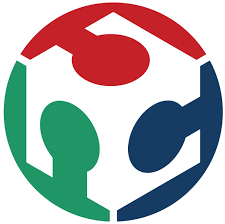Assignment
Propose a final project masterpiece that integrates the range of units covered,
answering:
What will it do?
Who's done what beforehand?
What will you design?
What materials and components will be used?
Where will come from?
How much will they cost?
What parts and systems will be made?
What processes will be used?
What questions need to be answered?
How will it be evaluated?
My final project as proposed on Week 1 "Principle and Practice" will be an AUTOMATED INDOOR HANGING GARDEN.
What will it do?
The Idea is to create a suspended supporting tray where we can put all the desired Plants with their pots on it, and the Sytem will take care of the needed Lighting , Watering and Ventilation for air purification.
This System can be used at home for people who love greenery but don't have the time to take care of it.
And because it needs less maintenance it can be used also in public places where the ceiling is high and the automation will takeover.
Who's done what beforehand?
Lighting:
Every plant needs an optimal quantity of light during daytime for a good growth.
Grow Light will be installed and controlled via a clock and a light sensor.
Examples:



Watering:
There is a lot of examples on the internet showing automated plant system with scheduled lighting and watering:
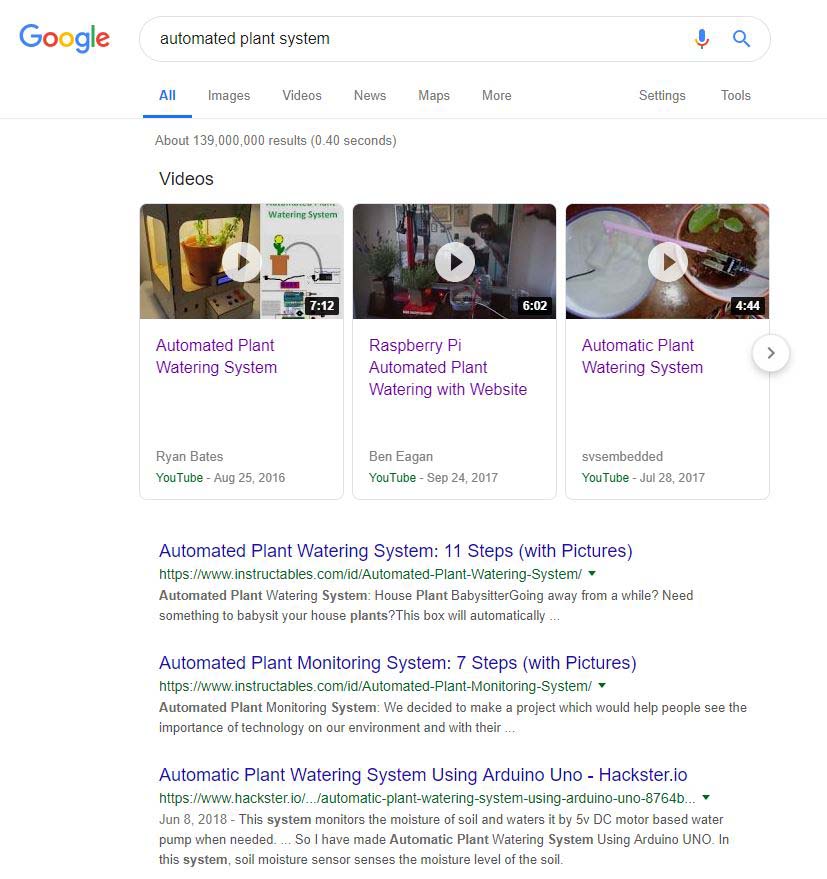
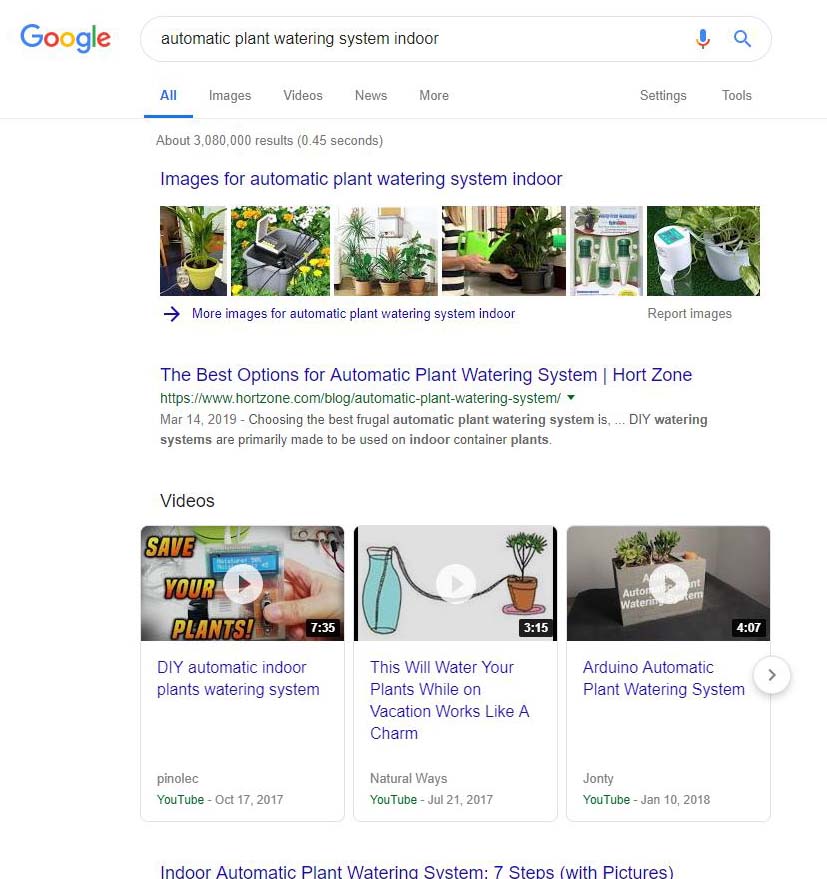
But most of these examples are big systems sitting on the floor or on the table taking too much space.
So I decided to search for "automated watering hanging plants"

And noticed that most of them depend on water dripping system with visible tubing.
Then I found the semi-automated planter semi-automated-plant-pots.
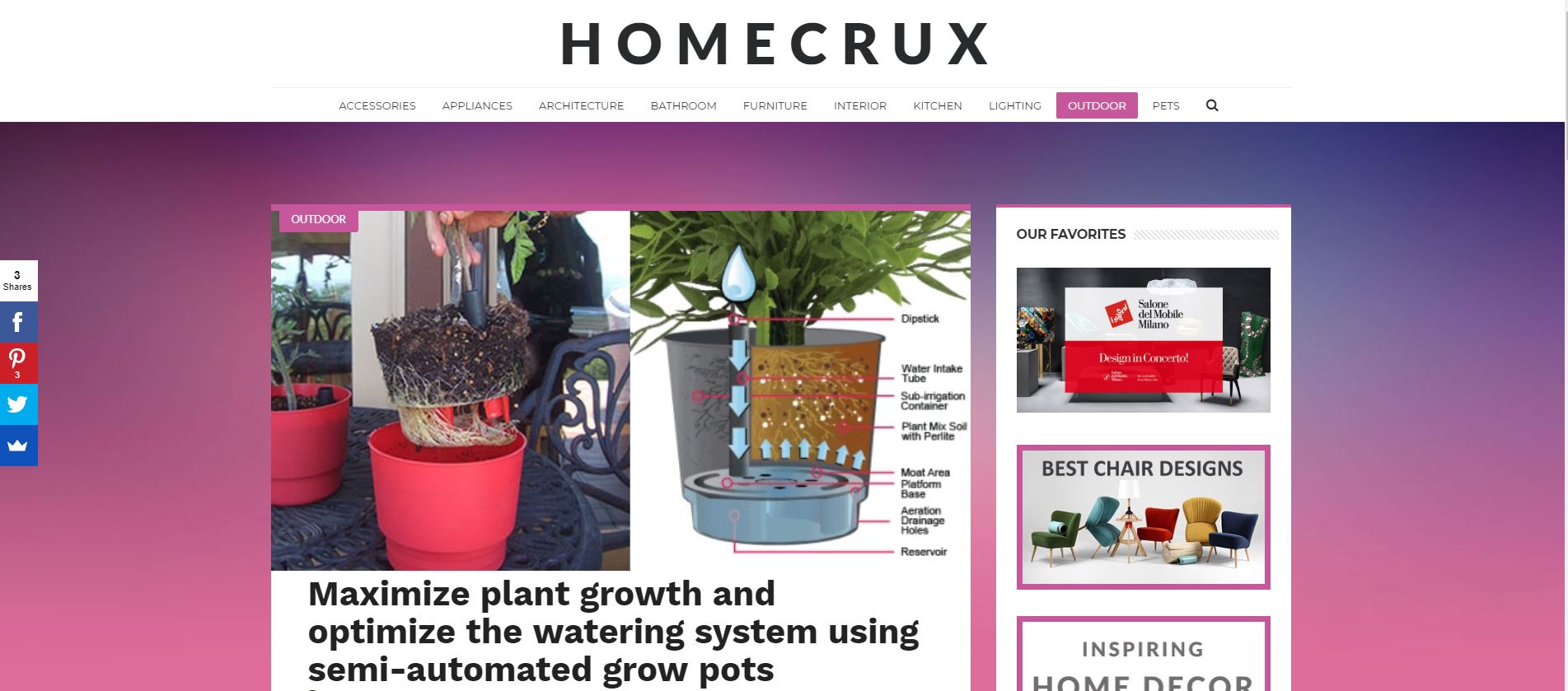
This system is called also a Sub-irrigated_planter.
This Subirrigation also known as seepage irrigation, is a method of irrigation where water is delivered to the plant root zone The excess may be collected for reuse.

Based on this , my watering system will be from the bottom up by soaking the plant pot in water for a certain time until the top of the potting mix is wet.
Than the water is removed.
Bottom watering example and advantage.
Ventilation:
Ventilation is important for indoor garden, because it allows for the removal of excessive heat and humidity, and helps provide fresh air.
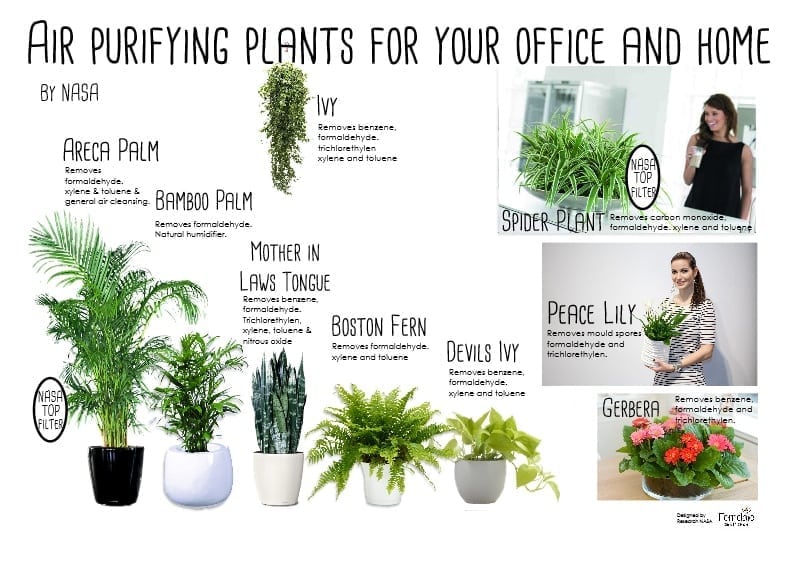
CLAIRY Product is an example of a natural air purifier
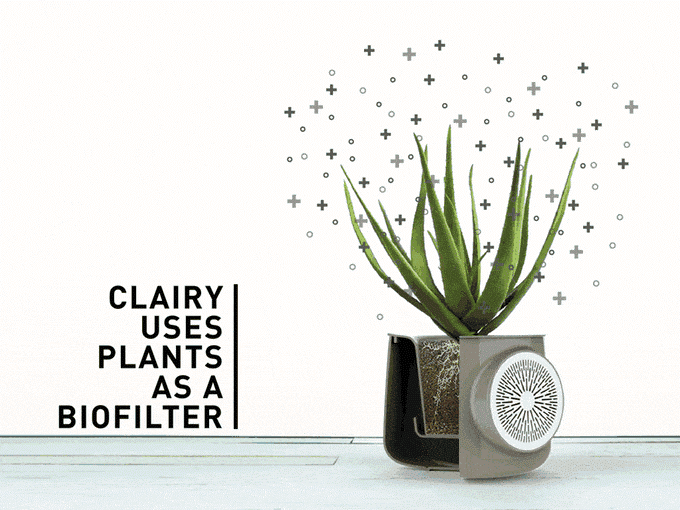
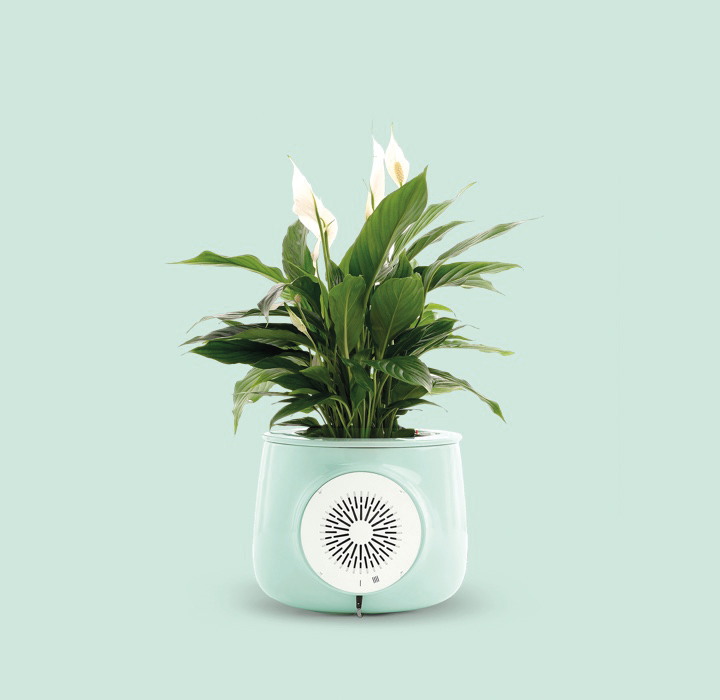
Plant Air Purifier is another example of natural air purifier

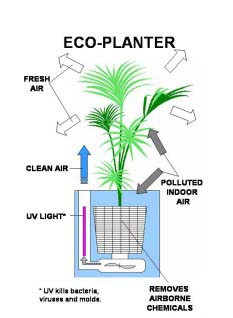
What will you design?
My project will be consisting of different parts that should be designed and linked together:
- The Supporting Structure or the Tray.
- The Lighting Support.
- The Planting Pots.
- The Watering System (Pumps and tubing).
- The Ventilation System (Fan and ducting).
- The Automation System (Electronics and sensors).
What materials and components will be used?
The material and components used are the following:
- Wood Panel and Plexi for the Tray.
- A Grow Led for the lighting.
- PLA for the 3D printing.
- 2 x 12v Diaphragm Water Pumps for the watering system.
- 2 x 12v 12cm Fans for the ventilation system.
- Water pipes (8mm) for the watering and ventilation.
- A transparent container used as a water tank.
- Electonic components : Ldr, soil moisture , lcd screen , real-time clock , temperature and humidity sensor ,relays , 12v power supply.
- Metal cable for the ceiling fixation
Where will come from?
They will be provided from local suppliers.
How much will they cost?
- The Board 50$
- The LED
- PLA based on the consumption
- Diaphragm water Pump 6$
- Fan 2$
- Transparent container 8$
- LDR
- LCD screen
- Real time clock
- Temperature and humidity sensor
- Relays
- 12v power supply.
- Metal cable
What parts and systems will be made?
All the designed parts will be made in the lab except the pumps , the fans , the pipes , the electronics sensors and the standard items needed for the assembly.
What processes will be used?
In order to achieve my project , several processes will be used:
- 2D & 3D Design for all the parts. Refer to Week 3 "Computer Aided Design" to know more about the process.
- 2D laser cutting for some part of the Tray . Refer to Week 4 "Computer Controlled Cutting" to know more about the process.
- CNC milling for the supporting structure. Refer to Week 8 "Computer Controlled Machine" to know more about the process.
- FDM 3D Prining for the Planting pots and the Ventilation Duct. Refer to Week 6 "3D Scanning and Printing" to know more about the process.
- CNC milling for the electronic board production. Refer to Week 5 "Electronics Production" to know more about the tested input and output devices.
- Programming for the devices control. Refer to Week 12 "Output Device" to know more about the tested input and output devices.
What questions need to be answered?
In order to achieve the project goals some questions need to be answered:
- Light quantity and duration.
- Water quantity and period.
- Soil mixture composition.
What is the Schedule?
The schedule will be divided into three parts:- The Design
- The Production
- The Assembly and Testing
1-The design
- First I need to finalize the design and set the exact dimensions of the supporting structure with all the different parts.
- Then in parallel , I can design the 3D printed parts : the pots , the ventilation duct , the water tank base.
- Once all the dimensions of the parts are clear , I can start designing the PCB Board.
2-The Production
- Production of the Tray.
- Production of the 3D printed parts.
- Production of the PCB Board.
3-The Assembly and Testing
- Assembly of the parts.
- Programming and testing.
- Installing the plants.
How will it be evaluated?
Prior to the execution of my project I will be setting some criteria in order to self evaluate the success or the failure of my project:
- The project should meet the original purpose that was created for : Self Taking care of the plants and making them thrive.
- Simple and Minimalist Design : Focusing on the visibility of the plants rather than the whole system.
- Easy and Low maintenance system.
- The Idea itself: Will the people love the idea and willing to buy the product?
- Extra features : Air purification , data collection , wireless connection.
